16th January 2023
Carbon literacy in A level chemistry
What is carbon literacy and why is it important?
As part of our commitment to becoming a carbon-neutral College by 2030 (click here), we have also looked at ways in which “carbon literacy” or awareness of the impact of carbon dioxide (CO2) emissions from human activity impacts on climate change. Across a range of subjects, we have looked at how this can be embedded into the curriculum.
In our A-level chemistry, one of the key areas in the first year curriculum which links to this is addition polymers (plastics) from the family of organic chemicals known as alkenes, and their environmental impact. We have developed our standard polymers lesson to include an audit in terms of potential CO2 release on burning, of a range of recycled plastic items typical of what an average household might use.
Combustion of plastics has long been put forward as an alternative source of energy to try to address modern society’s reliance on fossil fuels. On the surface, although this appears to be one possible solution, the problem is that the plastic items contain the exact same carbon atoms that oil, petrol and natural gas fuels have in them, and therefore release the same CO2, with the resultant impact on climate change.
Below are some pictures of our students at work, alongside their calculations. We were joined in this lesson by Jane Dickson, Education for Sustainable Development Manager for the FE Colleges in Sussex.
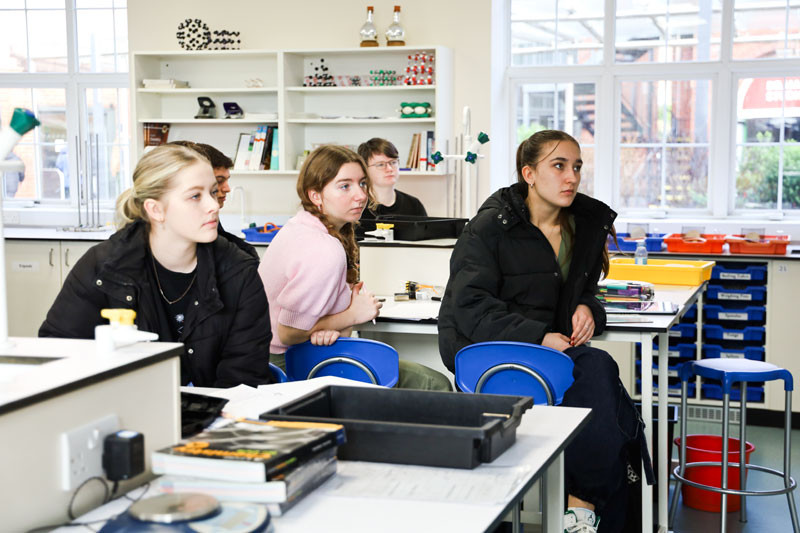
The class gets a quick introduction from me on what to do.
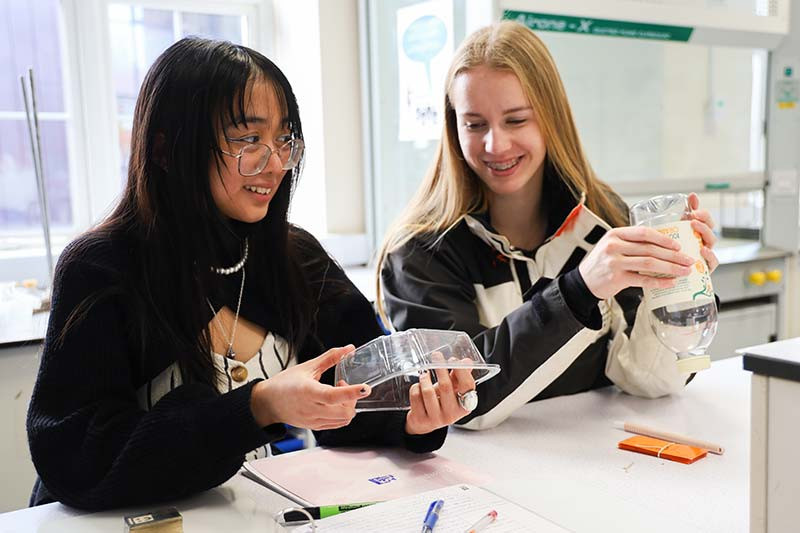
Once the plastic item has been selected, it’s down to work! Val and Eva look for the recycling stamp that will identify the particular polymer their item is made of.
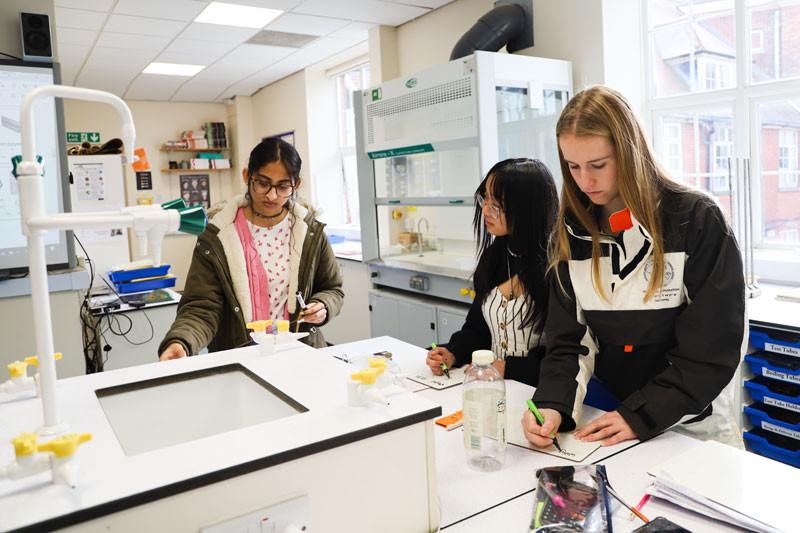
Achu, Val and Eva compare how much CO2 their plastic item contains.
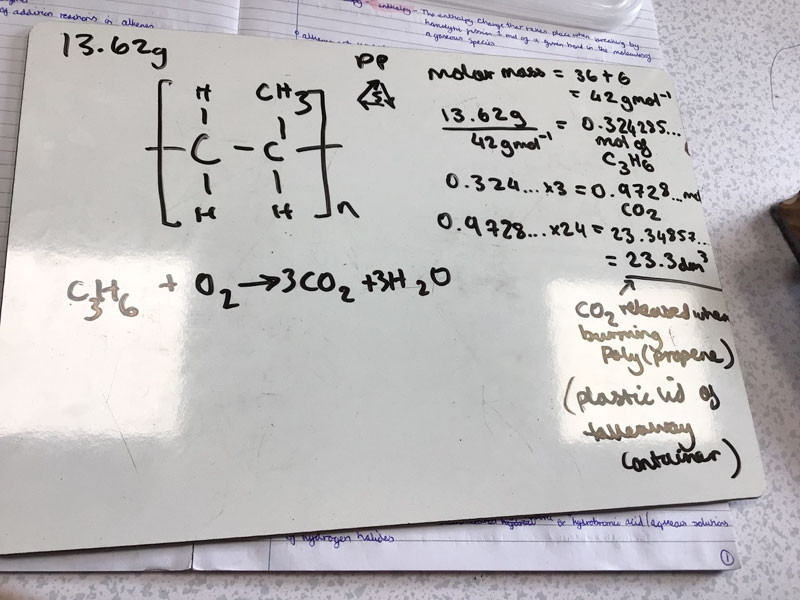
Achu’s calculation for her plastic item.
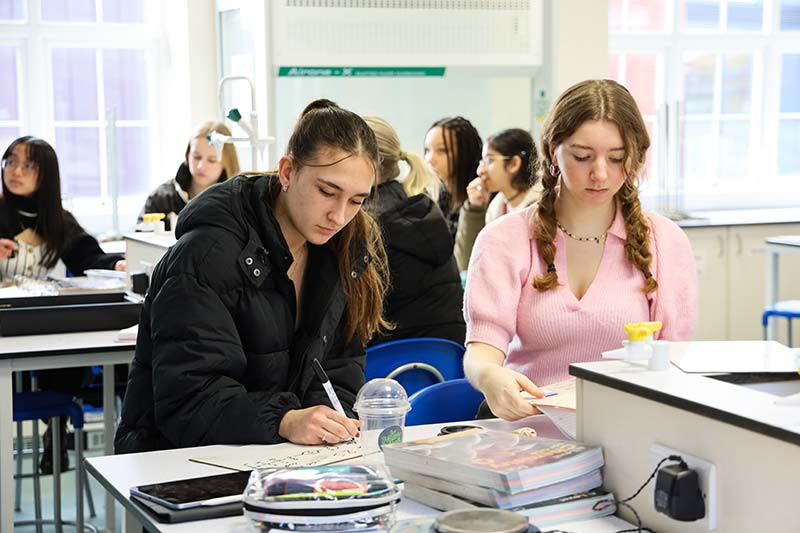
Megan and Phoebe work out the chemical structure of their plastic item.
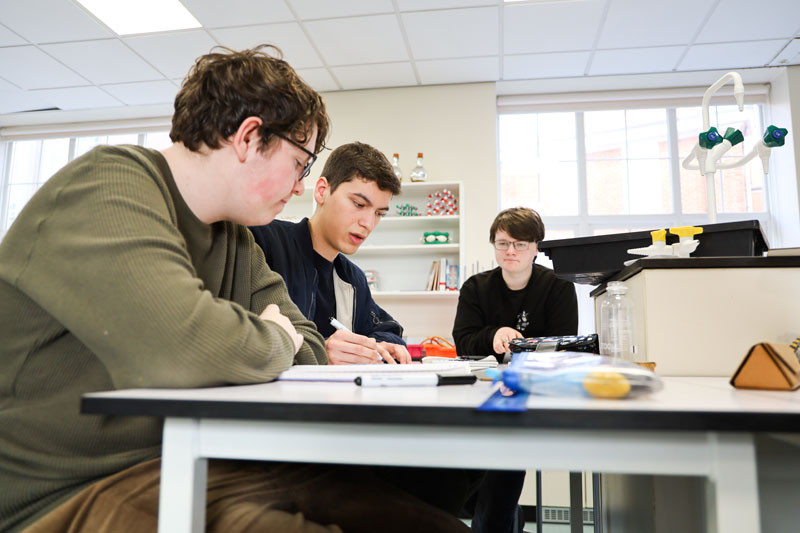
Noah, Finley and Harlan compare their calculations.
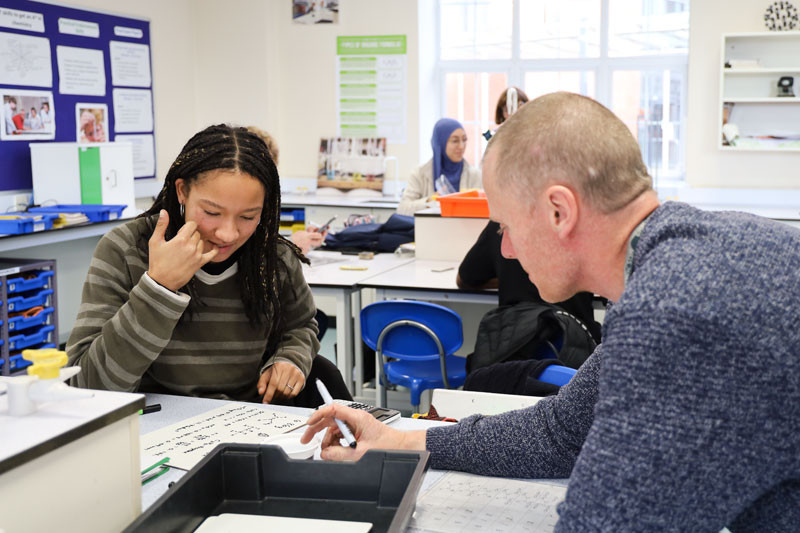
Izzy checks her work with me.
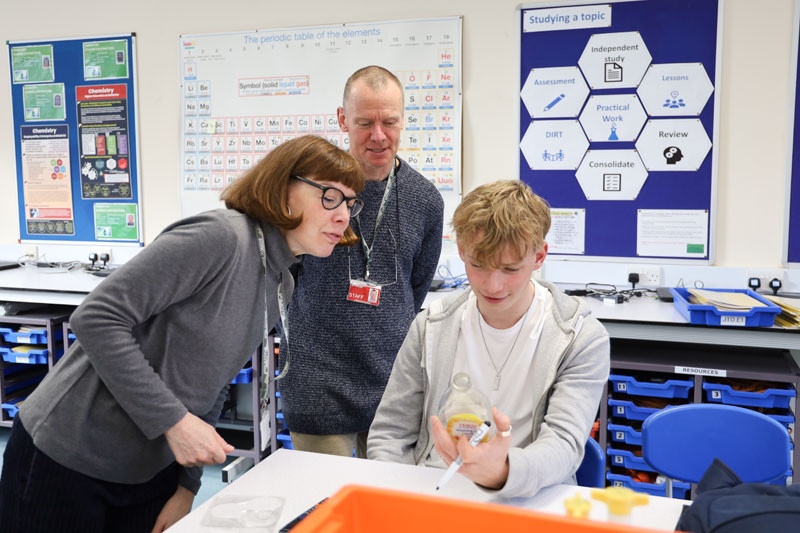
How much?! Archie checks how much CO2 comes from just one washing up bottle. Jane and I have a look at the recycling details on the label.
How does the idea work?
Click here for a short video outlining the issue and the chemistry behind it, as well as a worked example of the calculation. The task instructions are below.
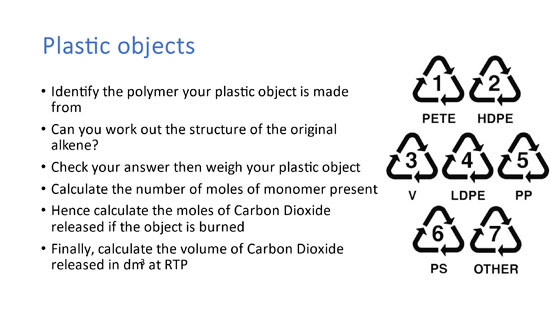
Followup – has the activity had an impact?
Once the students completed the activity we asked them some key questions via an online questionnaire, to see if the activity has made them think about carbon impacts from simple everyday actions:
- Does this real world-based activity make the alkenes topic more understandable and connect you more with chemistry? How?
- Has this activity made you feel more confident to talk to others about carbon impacts, climate change or to make changes or adjustments in your own life? If so, in what way?
- Will carbon impacts and sustainability have an influence on your next educational steps and/or career choices beyond BHASVIC? If possible can you say in what way?
Below are some “word clouds” the online questionnaire collected from their responses, together with some quotes from individual students themselves:
Question 1: Does this real world-based activity make the alkenes topic more understandable and connect you more with chemistry? How?
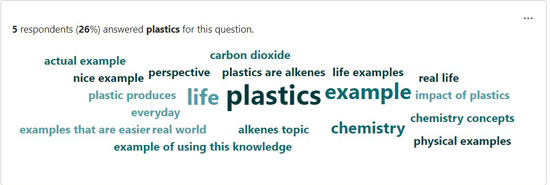
“It helps connect chemistry concepts to the real world which deepens your understanding of the concept.” - Jude
“Yes, it puts into perspective just how much carbon dioxide a small amount of plastic produces and it makes you think how much worse it is on a larger scale” - Emona
“Yes it did as it linked chemistry to the processes we observe often in day to day life” - Benjamin
“It does help me understand the alkenes topic as it helps with calculation questions and how alkenes are used in the real world making plastics.” - Rania
Question 2: Has this activity made you feel more confident to talk to others about carbon impacts, climate change or to make changes or adjustments in your own life? If so, in what way?
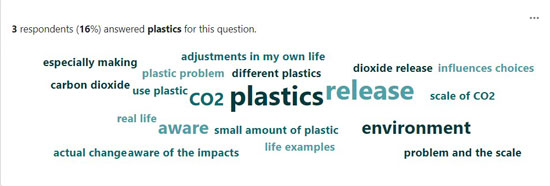
“Yes because I now know the reason why plastics can't just be burnt all together, as well as the effort it takes to separate all the different plastics, which helps me to clear up a misconception that all we have to do is burn plastics to solve the issues” - Oliver
“It has because the sheer amount of carbon dioxide release from such a small amount of plastic is astounding and that makes me worry for the environment more than I used to and I now try do more recycling or not buy plastic wrapped products as much.” - Maizy
“Yes I’m really enthusiastic now!” - Fred
Question 3: Will carbon impacts and sustainability have an influence on your next educational steps and/or career choices beyond BHASVIC? If possible can you say in what way?

“Possible I’d like to go into engineering” - Ben
“Sustainability is a work area I am considering pursuing” - Jude
“Probably not, although I am thinking of going into chemistry so that will have elements of carbon literacy embedded regardless” - Oliver
